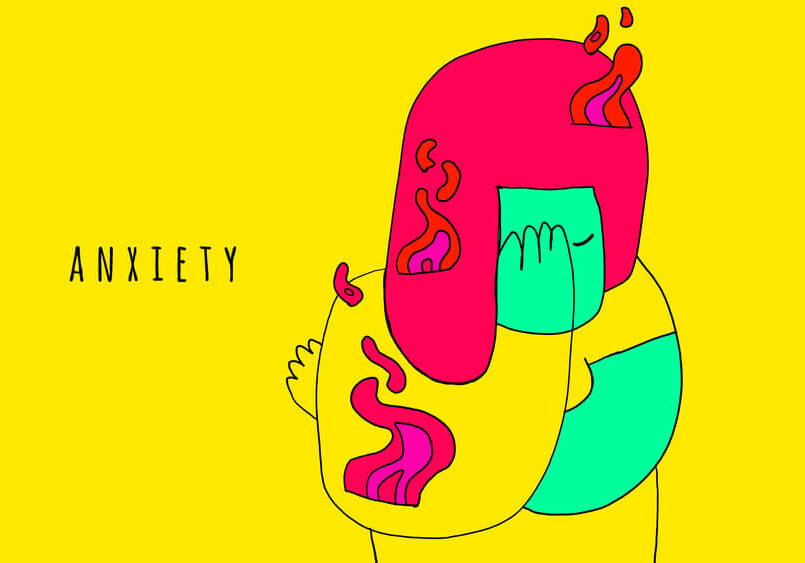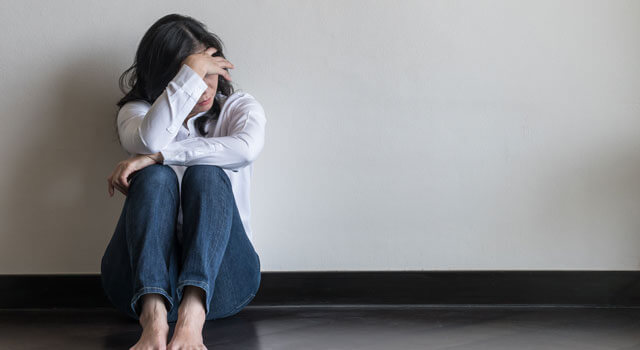When to Seek Professional Help for Anxiety Symptoms

Feeling anxious or worried is bound to happen to all of us at some time or another. Experiences with anxiety are a normal part of life. However, anxiety symptoms can develop into a mental illness for some individuals. When this happens, worries become debilitating, interfering with your daily life.
It’s not always easy to tell if your symptoms are a true mental illness or just the normal amount of worry. Certain situations, especially the ones we don’t like, can cause our anxiety symptoms to spike. Moving, changes in relationships, financial troubles and speaking in public can all trigger these spikes. If your anxiety has spiked out of control, it might be time to seek professional treatment for anxiety.
Why is treatment so important?
The earlier we seek out help for our anxiety symptoms, the sooner we can break free and move on with our lives. Sometimes speaking up with your doctor about anxiety will lead to a quick fix. Certain medications can cause anxiety. A conversation with your doctor can help you identify sources of anxiety to cut out. In case you’re curious, these are the prescription medications associated with anxiety.
- Asthma medicines
- Oral contraceptives
- Hormonal treatments
- Thyroid medications
- Medications that contain amphetamines. ADHD medicines like Ritalin contain amphetamines
- Steroids, including cortisone and prednisone which are commonly used to treat inflammation
- Blood pressure medications
- Levodopa
- Phenytoin
- Some anti-depressants
- Decongestants and cough medications
- Caffeine
Illicit drugs and drug abuse can cause anxiety and make it too:
- Cocaine, crack, and speed (methamphetamine)
- Marijuana
- Hallucinogens, like LSD or mushrooms
- Alcohol
Even if there’s no simple answer, there are still important reasons to get treatment ASAP. The earlier we enter treatment, the easier it is to beat anxiety and regain control of our lives. Scientific studies with anxiety patients show early treatment is the most effective, so don’t be afraid to speak up early.
Normal vs Disordered anxiety symptoms
What does an anxiety disorder look like compared to the norm? Let’s take a look at some of the most common anxiety symptoms. We’ll compare the normal level to what would count as a symptom of mental illness.
Worry | Anxiety Disorder
It’s natural to worry when we have stressful events popping up in our lives. New schools, jobs, relationships, and going through something traumatic can give us some serious anxiety. Normally, these symptoms fade and disappear once you’ve gotten used to your new situation. Sometimes, worry can become excessive and persistent. When this happens, you might be experiencing Generalized Anxiety Disorder, GAD. This condition is usually diagnosed when:
- You have persistent anxious thoughts most days of the week for at least 6 months.
- Your anxiety symptoms have caused problems at work, school, or in the home.
Panic disorder can happen if your anxiety comes in extreme waves, or attacks. A panic attack and a heart attack can be confused. Because of this, it’s important to seek treatment if you’re experiencing a panic attack for the first time. Attacks include symptoms like chest pain, fear, inability to breathe, thoughts of dying, and increased heart rate.
Occasional restlessness | Disordered sleep
Sometimes its hard to sleep the night before a big event. That’s normal and we can expect it from time to time.
With anxiety and depression too, we see severely disrupted sleep. People complain of trouble falling asleep, staying asleep, and waking up feeling agitated and untested. These sleep problems can happen as often as every day!

Common fears | Phobia
A lot of us are afraid of something. The slimy stuff at the bottom of lakes makes me scream like a horror movie casualty, but this is not a true phobia. After swimming around a while and goofing off, I get over it. However, phobias occur when a fear develops beyond something like my slime example and interferes with our lives. Treatment for phobias is so effective that people can see a full recovery within weeks.
Common disruptive phobias include:
- Agoraphobia – fear of leaving the house
- Cynophobia – fear of dogs
- Acrophobia – fear of heights
Occasional aches | Hypochondria, chronic mysterious pains
One of the most common anxiety symptoms, especially in children and teens, is chronic pain. Usually, the pain has no obvious source or reason, but it still disrupts daily life.
Most of us experience some aches and pains once in a while, usually after doing something strenuous. If we were to feel fatigued and in pain 24/7, that would be a red flag for anxiety.
Indigestion | Irritable Bowel Syndrome, or chronic digestive problems
Anxiety can manifest in the belly sometimes. Emotional stress and gut functioning are closely connected. This means that some of us experience anxiety as chronic gas, indigestion, cramping, and irregular bowel movements. If you’re experiencing stomach problems ALL of the time, consider anxiety.
Stage fright | Social Anxiety Disorder
Who likes speaking to crowds? It can be stressful, and always gives me butterflies in the stomach. However, mild fear of crowds and social demands is pretty common. It doesn’t mean you have social anxiety disorder. This mental illness interferes ‘s with people’s ability to go through with even the most minor interactions. Buying a few groceries and having to talk to the cashier can trigger sweating and panic in someone with social anxiety disorder.
Occasional flashbacks | Post-traumatic stress disorder
We all have trauma; life isn’t always easy. Sometimes memories of these events will disrupt our day. PTSD, post-traumatic stress disorder, refers to a more extreme situation. PTSD is common in war-vets and crime survivors because it tends to follow a horrible event. The reaction can spiral out of control into an anxiety disorder.
Perfectionism | Obsessive Compulsive Disorder
It’s fairly to common to joke around that we’re “OCD” if we’re particular about something. Keeping clean pillowcases, sweeping a lot, or arranging the groceries neatly do not indicate OCD! Particularities make us unique, not ill. Obsessions and compulsions, the two main features of OCD, can become so severe that school and work become impossible.
Do You Need Treatment for Anxiety?
If after reading through our guide, you believe your anxiety symptoms indicate a disorder, speak up. Residential treatment will help you overcome those symptoms and maintain control of your life. Reach out to us at Breathe Life Healing Centers, we have experience in treating anxiety disorders.
To Inquire About Breathe Life Healing Centers, Please Call
Our Helpline 24/7 at (800) 929-5904
Get Help Now
Send us a message and a member of our team will be in touch shortly.
